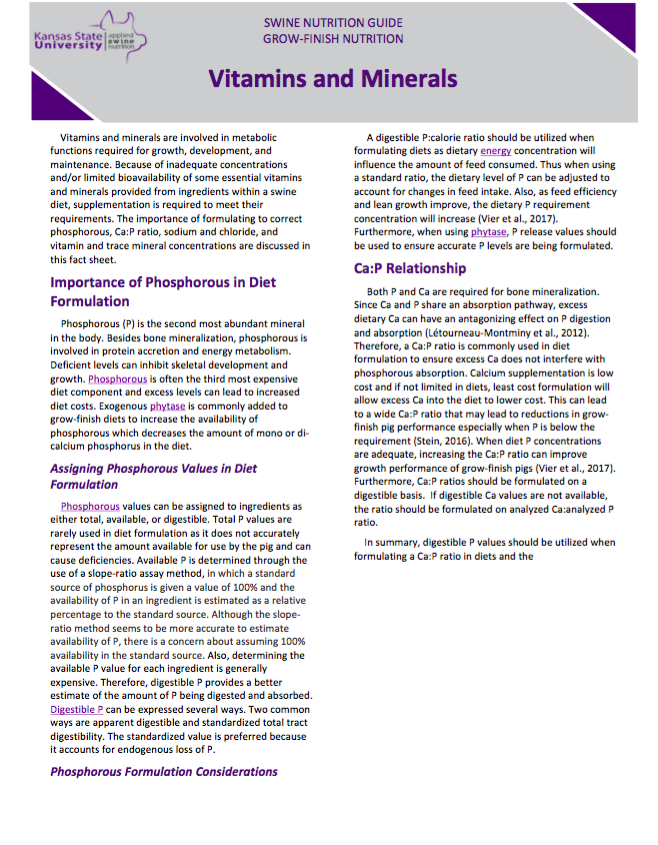Importance of Phosphorous in Diet Formulation
Phosphorous (P) is the second most abundant mineral in the body. Besides bone mineralization, phosphorous is involved in protein accretion and energy metabolism. Deficient levels can inhibit skeletal development and growth. Phosphorous is often the third most expensive diet component and excess levels can lead to increased diet costs. Exogenous phytase is commonly added to grow-finish diets to increase the availability of phosphorous which decreases the amount of mono or di-calcium phosphorus in the diet.
Assigning Phosphorous Values in Diet Formulation
Phosphorous values can be assigned to ingredients as either total, available, or digestible. Total P values are rarely used in diet formulation as it does not accurately represent the amount available for use by the pig and can cause deficiencies. Available P is determined through the use of a slope-ratio assay method, in which a standard source of phosphorus is given a value of 100% and the availability of P in an ingredient is estimated as a relative percentage to the standard source. Although the slope-ratio method seems to be more accurate to estimate availability of P, there is a concern about assuming 100% availability in the standard source. Also, determining the available P value for each ingredient is generally expensive. Therefore, digestible P provides a better estimate of the amount of P being digested and absorbed. Digestible P can be expressed several ways. Two common ways are apparent digestible and standardized total tract digestibility. The standardized value is preferred because it accounts for endogenous loss of P.
Phosphorous Formulation Considerations
A digestible P:calorie ratio should be utilized when formulating diets as dietary energy concentration will influence the amount of feed consumed. Thus when using a standard ratio, the dietary level of P can be adjusted to account for changes in feed intake. Also, as feed efficiency and lean growth improve, the dietary P requirement concentration will increase (Vier et al., 2017). Furthermore, when using phytase, P release values should be used to ensure accurate P levels are being formulated.
